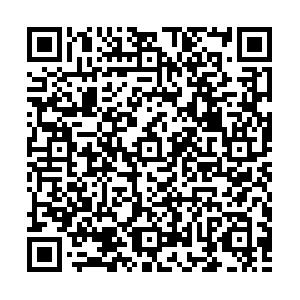肟菌酯对环境生物急性毒性及安全性评价
Acute Toxicity and Safety Evaluation of Trifloxystrobin to Environmental Organisms
-
摘要: 本试验通过研究肟菌酯对10种环境生物急性毒性效应,以期评价其对环境生物的毒性风险。结果表明,肟菌酯对日本鹌鹑(Coturnix coturnix japonica)的经口毒性7 d-LD50和短期饲喂毒性8 d-LC50分别大于2.00×103 mg a.i.·kg-1 bw和5.00×103 mg a.i.·kg-1 饲料,意大利蜜蜂(Apis mellifera L.)接触与经口毒性48 h-LD50分别为大于100 μg a.i.·蜂-1和95.3 μg a.i.·蜂-1,家蚕(Bombyx mori)96 h-LC50为1.61×103 mg a.i.·L-1,蚯蚓(Eisenia foetida)14 d-LC50大于100 mg a.i.·kg-1 干土,赤眼蜂(Trichogramma japonicum)24 h-LR50为0.337 μg a.i.·cm-2,羊角月牙藻(Pseudokirchneriella subcapitata)72 h-EC50为5.80×10-3 mg a.i.·L-1,大型溞(Daphnia magna Straus)48 h-EC50为1.72×10-2 mg a.i.·L-1,斑马鱼(Brachydanio rerio)96 h-LC50为5.40×10-2 mg a.i.·L-1,非洲爪蟾(Xenopus laevis)蝌蚪96 h-LC50为8.95×10-2 mg a.i.·L-1,土壤微生物28 d硝酸盐转化速率差异小于25%。因此,根据《化学农药环境安全评价试验准则》毒性等级划分标准,肟菌酯对鸟、蜜蜂、家蚕、蚯蚓等陆生生物为低毒,对水生生物的绿藻、大型溞、斑马鱼、非洲爪蟾蝌蚪均为高毒或剧毒,而对天敌赤眼蜂属高风险,故在田间使用过程中应采取措施降低其对水生生物以及天敌昆虫赤眼蜂急性毒性风险,以免造成危害。Abstract: We have tested trifloxystrobin on 10 kinds of non-target organisms to evaluate its toxicity risk to environmental organisms. Test results showed that the 7 d-LD50 of acute oral toxicity and 8 d-LC50 of dietary toxicity on Coturnix coturnix japonica were >2.00×103 mg a.i.·kg-1 bw and >5.00×103 mg a.i.·kg-1 diet, respectively; 48 h-LD50 of acute contact toxicity and oral toxicity on Apis mellifera L. were >100 μg a.i.·bee-1 and >95.3 μg a.i.·bee-1, respectively; 96 h-LC50 of Bombyx mori was 1.61×103 mg a.i.·L-1; 14 d- LC50 of Eisenia foetida was >100 mg a.i.·kg-1 dry soil; 24 h-LR50 of Trichogramma japonicum was 0.337 μg a.i.·cm-2; 72 h-EC50 of Pseudokirchneriella subcapitata was 5.80×10-3 mg a.i.·L-1; 48 h-EC50 of Daphnia magna Straus was 1.72×10-2 mg a.i.·L-1; 96 h-LC50 of Brachydanio rerio was 5.40×10-2 mg a.i.·L-1; 96 h-LC50 of Xenopus laevis was 8.95×10-2 mg a.i.·L-1; the difference of 28 d nitrate transformation rate of soil microorganism was <25%. According to the pesticide virulence classification standard suggested by Chemical Pesticides Environmental Safety Evaluation Test Guidelines, the test results indicated that the trifloxystrobin is low toxic to terrestrial organisms (quail, honeybee, silkworm and earthworm) but highly or extremely toxic to aquatic organisms (alga, daphnia, fish and Xenopus laevis). It also can expose high risk to Trichogramma. When trifloyxteobin is deployed to farm fields, certain safety measures shall be taken to reduce its harm and risk to aquatic organisms and Trichogramma.
-
Key words:
- trifloxystrobin /
- environmental organism /
- acute toxicity /
- safety evaluation
-

-

 点击查看大图
点击查看大图
计量
- 文章访问数: 2439
- HTML全文浏览数: 2439
- PDF下载数: 41
- 施引文献: 0


 下载:
下载:
